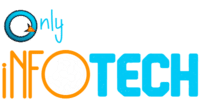A 10-step guide to queer UX – Info Web Design
I recently went to a SheGeeksOut event at the OKCupid headquarters. Something had been on the back of my mind since I started my journey to become a developer, and I never quite knew how to express it. Part of entering this field was a desire to not only see people like me in tech, but to make tech for people like me to use. This is why factors like accessibility matter. There’s nothing revolutionary about technology if it is only for a limited number of people.
At SheGeeksOut, the evening’s talks started with a non-binary person working for OKCupid, Rowan Rosenthal, on the subject of how to make products more accessible for gender non-conforming and trans folks, and concluded with how to make your office spaces more welcoming for the same folks. I greatly enjoyed this talk — it’s important to feel like matters involving your community aren’t taboo or something to be discussed behind closed doors.
After listening to the talk, I’ve been steeping for a bit about queer user experiences and intentional, user-friendly design. Here are some observations I’ve made from my own interactions with software, as a queer gender non-conforming woman.
1. Allow users to change or write in their own gender, if this is something your application makes use of. Forcing a user to re-create their whole account if their gender identity should shift isn’t a great experience, and it feels like a waste of resources.
2. Consider not having users specify a gender. There are lots of things that make us unique and interesting, gender does not have to be one of them at all times.

3. Allow users the choice to hide or display identifying information from profiles. Some people might not be out to everyone, some simply might enjoy a degree of privacy on the internet.
4. Don’t assume anything about gender presentation. Every time I’m forced to select a visual representation of a “woman,” that woman has hair, or she might be wearing a pink dress. I’m often more inclined to pick representations of men so I don’t have to do that.
5. Don’t assume your user’s pronouns. Going with “they” in copy rather than the antiquated “s/he” or any variation thereof is not only friendlier on the eyes, it just makes sense. The usage of the singular they is increasing prevalent within English-speaking communities.

6. Be careful with your marketing materials. Are you showing people of different genders, ages, races, sizes? Levels of ability? Many people stand at intersections — it’s not enough to assume that a small representation of a demographic is enough to attract that user base, let alone make them feel comfortable. You want more people to use your applications! Show it with how you present your idea to the world. A lot of people enjoy and remember the OKC DTF campaign because it includes a lot of different people in a refreshing way.
7. Don’t make assumptions about who your users date (or who they don’t date!). If you’re marketing a product toward women-identified people, for example, it’d be a disservice to assume that we have boyfriends. Dating and relationship apps often start with an assumption that all people are straight, cis, and monogamous and this can eventually become a point of contention as the user base grows. This has been changing in the industry — OKCupid allows for 22 different gender options, and Tinder is now making more attempts to include gender diverse users.

8. If you’re making a niche product, receive actual feedback from the people in said niche. One frequent complaint I heard from the industry I previously worked in is that products designed for cis women and DFAB folks felt as though designers and marketers had never spoken to anyone in these groups. Making products truly great for a niche involves research, time, and being flexible.
9. Be mindful of regionalization. Talking to your user base also means gathering information on how well localizations are being received. Gendered terms and ideas about gender and sexuality don’t necessarily have a direct translation, so it’s important to ensure that your messaging is coming across regardless of who receives it.
10. Diversify your staff. If you have a diverse staff, and they know their opinions are valid and considered valuable to the company, certain conversations will be able to start before a feature is even pushed out. Making a real commitment to diversity is also committing to having a better product and a team with broader perspectives.

After reading this, I hope you’ll think of ways you might have felt included or catered to in marketing, and carry this mindset into what you create. If you’re interested in more information on gender and sexuality, read Planned Parenthood’s excellent primer.
Article Prepared by Ollala Corp


